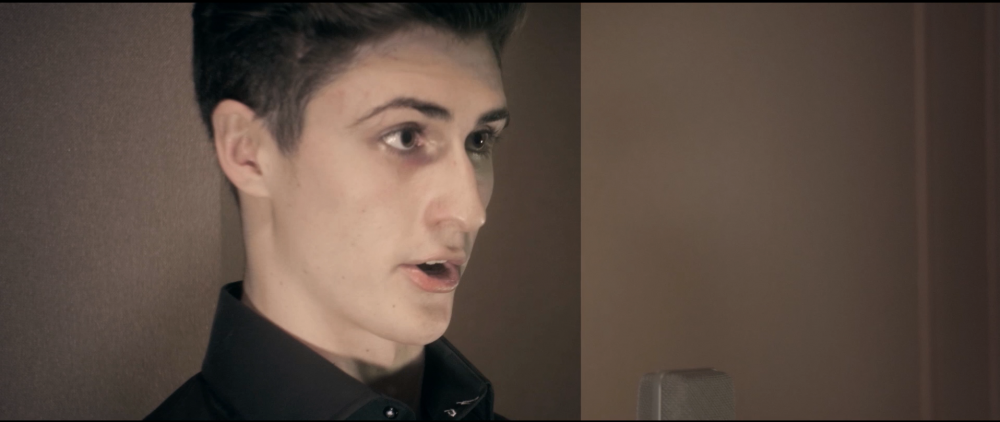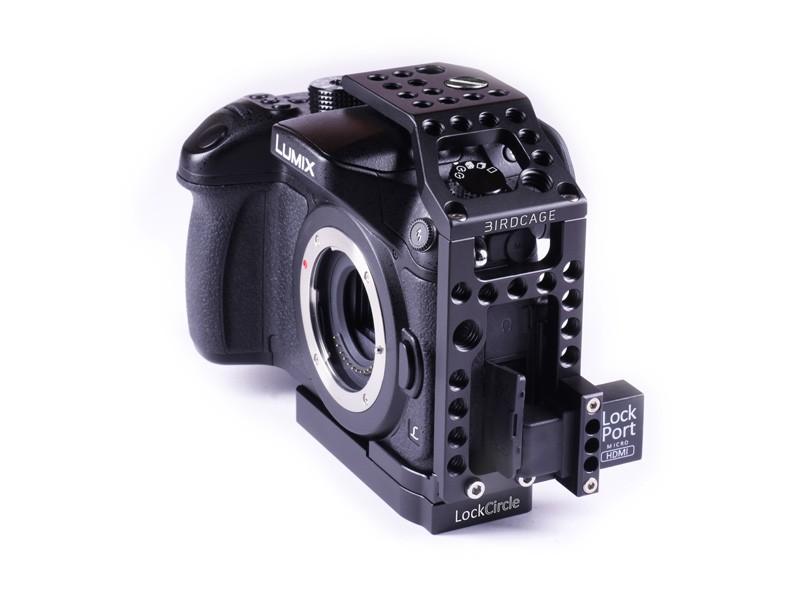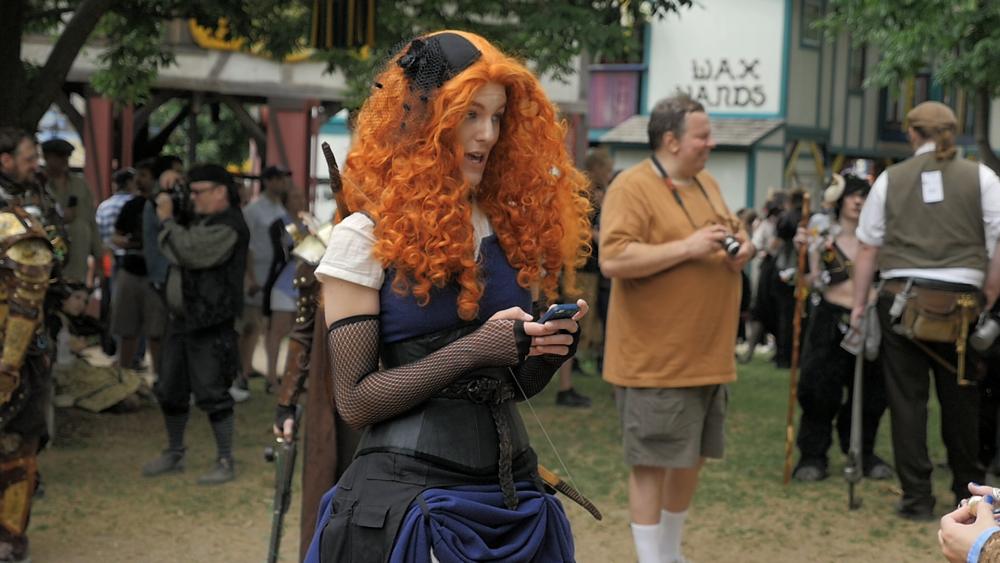-
Posts
376 -
Joined
-
Last visited
Content Type
Profiles
Forums
Articles
Posts posted by Nick Hughes
-
-
I'll be shooting with a Sony FS7 that I just rented. It's a personal project and I'll have my Nikon D750 (which I love) with my but I'd like to experiment with 4K/60p and high frame rates, so the FS7 made sense.
I'm not very familiar with Sony cameras. Are there any issues or quirks that I should be aware of and avoid? Also, as far as I understand there are several different picture styles with different color gamuts. I'd like to give SLOG3 a try and use the Cine EI, so if I understood everything correctly that will give me the most dynamic range and I'll shoot at the native ISO of 2000. What's the best way to set exposure then?Your only exposure controls are ND, aperture and shutter speed, to be used in that order IMO. If you're using LUTs in-camera, you can control how the dynamic range is spread out by 'rating' it at different ISOs, but ultimately the camera is still recording at 2000. It becomes tricky in low light situations since you can't raise the ISO, and underexposing SLOG can lead to lots of noise.
Sounds like you've already done a bit of research, so using the camera shouldn't be too much of a shock. Spend 30 minutes digging through all the menus, customizing your user menu and assignable buttons and you'll be good to roll. Shooting 180fps continuous is a joy.
-
When I set my zebras to 65% a lot of areas that are clearly not overexposed start striping. Is this really an appropriate setting?
Should I not look at the waveform monitor and just expose til I hit 100?
Those are values from the Canon white paper. I've never graded C-Log, so I can't say whether or not those values are truly best. Definitely worth trying the ETTR method that Ebrahim suggests.
-
In C-Log, 90% white falls around 63% IRE. Set your zebras around 65% IRE and don't let exposure go above it (generally- there may be many exceptions). If you're shooting in a controlled environment, use a white sheet of paper to set exposure- the paper should just slightly be hitting zebras (or be slightly below).
That's one method of exposing at least. There are many different schools of thought on the matter.
-
Abel's right down the road.
-
-
Thanks for the feedback, this is helpful. I was planning on using the Canon 24-105mm L lens. This is a bad choice because...they lack character? Are overly sharp? Philip Bloom (not the benchmark, just happened to watch his FS7 review to plan) uses Canon L lenses and his footage looks pretty good.
I personally like the look of Canon lenses. The clean, modern look appeals to me (depending on the project). The 24-105, however, is probably the lowest tier L lens they have. I think renting a set of primes would really do you well. 24, 50, and 135 (or 85) would be a solid combo.
The FS7 is not that bad to use. There are certainly much better designed cameras and menu systems, but once you wrap your head around where everything is (and set up your user menu), it's workable. It can definitely shoot solid handheld out of the box, but can get to be a little painful after hours and hours of shooting on your shoulder. I've been working on a show recently that has the Zacuto recoil built onto the FS7 and it's been a dream to shoot with.
Recording times for XQD cards.
You could lock it down on a manfrotto tripod, but you'd want to keep and eye (or hand) on it at all times.
If you do decide do go with the FS7, I highly recommend renting this Master class by Doug Jensen. It's a hefty $85, but you get six hours of detailed lessons on how and why to set up the camera in certain ways. I watched the whole thing before starting the show I'm on and was up and running with the FS7 right away.
- Gregormannschaft and 1tkman
-
 2
2
-
-
Hourly charge
In: Cameras
I generally prefer a flat day rate for anything under 12 hours. For me, there's not a whole lot of difference between a 3 hour or 8 hour shoot, since my day is already booked and I can't take other gigs. When clients are watching the clock trying to save a few dollars, the shoots tend to get rushed, which usually means more time in the edit trying to fix problems that could have been solved on set by taking your time. With clients that really want an hourly rate, I'll charge a fee just for showing up, then bill hourly.
-
-
Can you upload in 1440 but limit playback to 1080?
-
Good thing you're using scopes because that warm light and window can spell disaster for CC!
Nice solutions for maximizing space with three monitors (+ 2 for audio) and a control surface.
-
This Polaroid chest stabilizer was the first I ever got. It's not pro quality by any means, but it's so damn cheap that you could replace each individual component with better parts from SmallRig and still be happy with your bank account. The form factor is nice and small. Biggest problem with it is that none of the wingnuts ever seem to lock down completely. The camera plate is also pretty bad, but again, everything could be replaced pretty easily. Essentially, you're buying a $60 shoulder brace.
-
While it may be possible to implement tweaks to NR algorithms, etc. through firmware updates, ultimately the low light performance is tied to the sensor (and processor?). If the low light capabilities are hindering your work, you need to figure out a way to light your scenes (doesn't seem likely from what you've described), invest in noise reduction software such as Neat Video, buy faster lenses, and/or upgrade to a camera that has better low light performance, such as the A7s or C100.
-
Found the one I was looking for - Doug Jensen's Master Class. Only the 45 minute intro is free - the whole class is 6 hours long and costs $85.
The Andy Young video looks pretty enlightening as well. Guess I've my Saturday all planned out, then.
-
I'm starting on a series soon that will be using the FS7 and I'm looking for a web seminar that was floating around for a while. The guy gave an in-depth presentation about using the FS7 that seemed to cover a lot of bases. The video was 1-2 hours long I think. Does anybody have a link to this? Or other similar videos as well?
-
For final delivery, HQ should be fine. Even LT is probably good enough if you reaaally need to save a couple GB.
-
Yeah. Just the combination of full HDMI, XLR, internal recording and battery would be awesome. All in a battery grip size package.
But good point though. Found this two minutes ago. But still, "Wouldn´t it be nice", to put it with the Beach Boys:)
I have that cage. Bought it after the micro-hdmi connection started failing on the second shoot I ever used it on. It's expensive and you can't tilt the screen at all when installed, but the hdmi port is solid. It even ships with a second port in case the first one breaks. They also make a baseplate that lets you screw into a speedbooster, locking it solidly into the camera mount. I definitely recommend it.
-
in most musics the beats is not clearly heard which makes it super hard to do.
If you can't detect a beat (or rhythm) in a song, it probably means:
-The song is poorly written
OR
-The song is atmospheric,experimental,etc and shouldn't be edited to a beat
OR/AND
-You should practice more at detecting rhythm, as it's one of the most fundamental tools of editing
-
It's the same story with these guys thinking they can make it with a camera that has short battery life or heats up in thirty minutes and you have to wait for it. For cameras with a short battery life, add in a big battery to make up for it, you can not make it with the stock 1 hour battery, it will stop in 1 hour and you have to charge it for what feels like 2 hours, with one battery. This is a common problem in DSLRs and Mirrorless cameras.
You guys are trying to make a rushed out film that is an editor's nightmare. That is bad. You need as much room as you can get with a camera to perfect the cinematography, acting, and lighting as far as you can with your actor's and crew's level. Pain and sweat has to be made for this. I don't believe in deleting footage on the camera.
Who exactly are you addressing with this post? I don't think any of the members of this forum are going out and shooting a film with one card and battery. And if they are, they should be banned.
-
Does the speedbooster "ultra" AF now?
Yes, I believe all the EF-M43 Speedboosters and adapters work with AF now.
-
Sony is not a company like Nikon, Canon, Fuji, Olympus, BM, etc that will address any problems with a firmware update, but instead they will come with a new model next year. Its great that we have a company that pushes the boundaries of what is possible but at the same time we as consumers have to be aware of the negatives that come along.
While I don't disagree with the point you're making, Sony has released some pretty substantial firmware updates. XAVCS on the A6000, ProRes internal on the FS7, 4k on the F5 (but only after a hack did the same). I suppose that makes it all the more bizarre that they won't enable the shutter button to record video on the A7s or fix other easily-fixable quirks.
-
g7/gh4 do also get close to full frame for stills with the speedbooster ultra (1.28x crop factor I believe?). Probably take canon glass better than the nx1 too(?)
I've definitely been enjoying AF on the GH4 with my canon glass. Wouldn't count on it for non-repeatable moments (sports, weddings), but it fares well in most situations.
-
Wow that Alexa LUT makes ''the'' exact trick that's needed to fix the slight GH4 colour issue. Very nice. The skin of the girl is magically transformed from GH4 skin to pleasing skin. And the hair and greens.
I wish my NLE (Vegas Pro) supported LUTs (Come on Sony, Vegas Pro 13 is a 2015 update of an industry professional NLE and no LUT support came to mind?!)
It's such a shame as I wanted to try this on my footage.
Now I need to research and pay for fiddly third party software to start using LUTs and pray they work.
Nice catch Aaron. An enormous subtle difference!
Vegas doesn't have LUT support? That's crazy!
-






Where is the V Log love?
In: Cameras
Posted
I don't think many GH4 users have external recorders - I know the reason I initially bought the camera was so that I wouldn't have to buy a recorder. Most of the chatter on this forum seemed to be critical of noise, banding, etc with V Log internal, and while that hasn't scared me away from buying it, it certainly hasn't put me in a rush to spend the money.